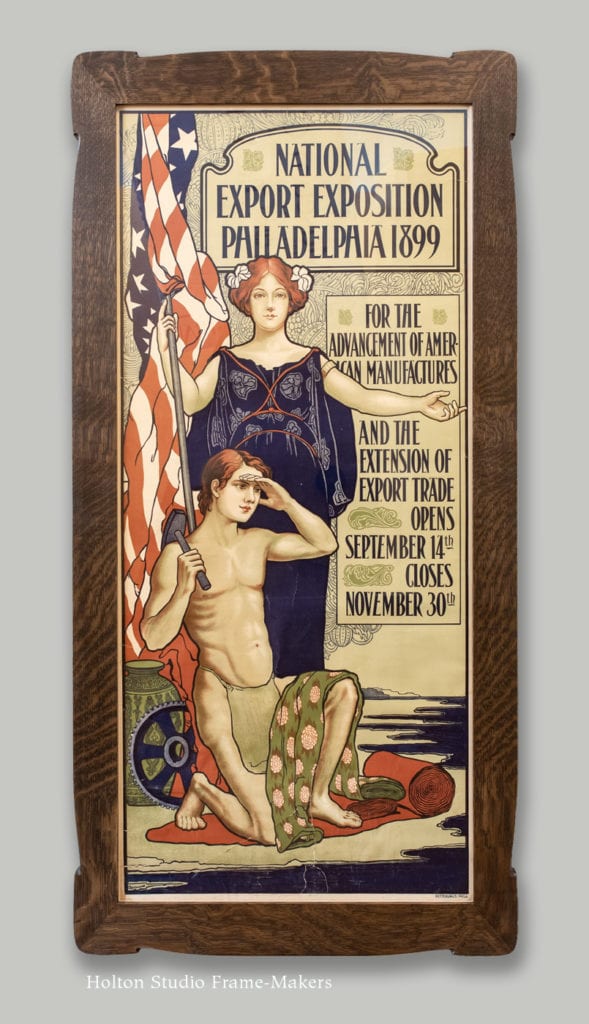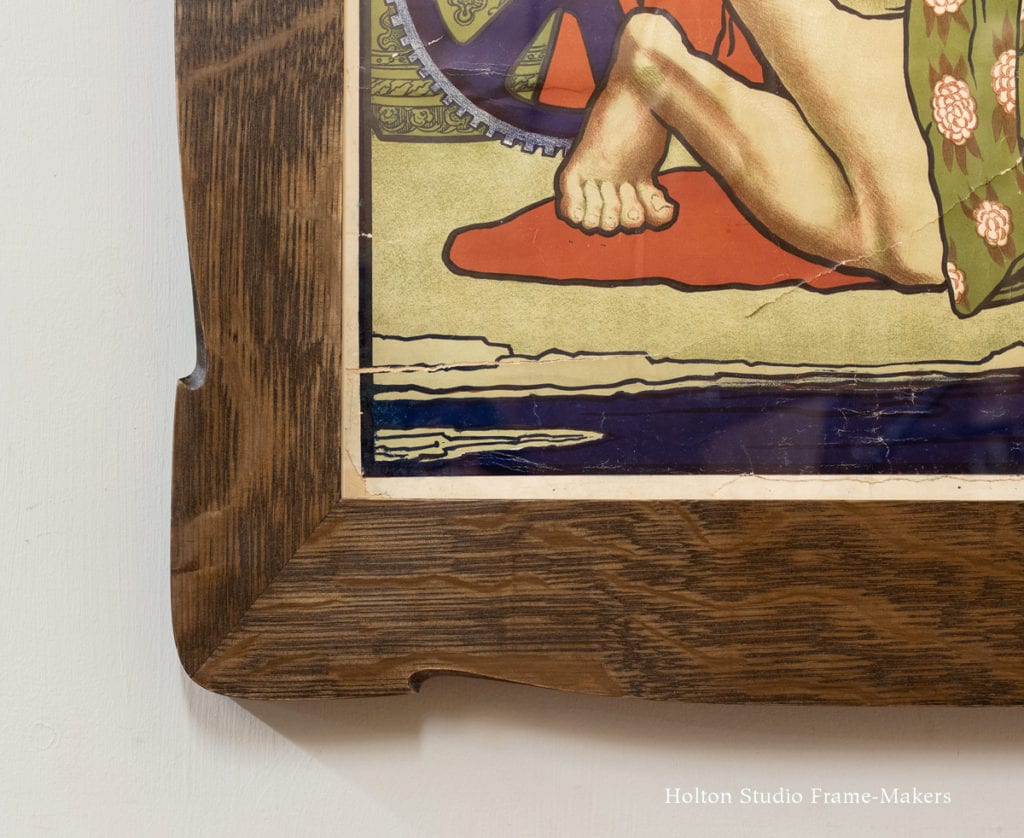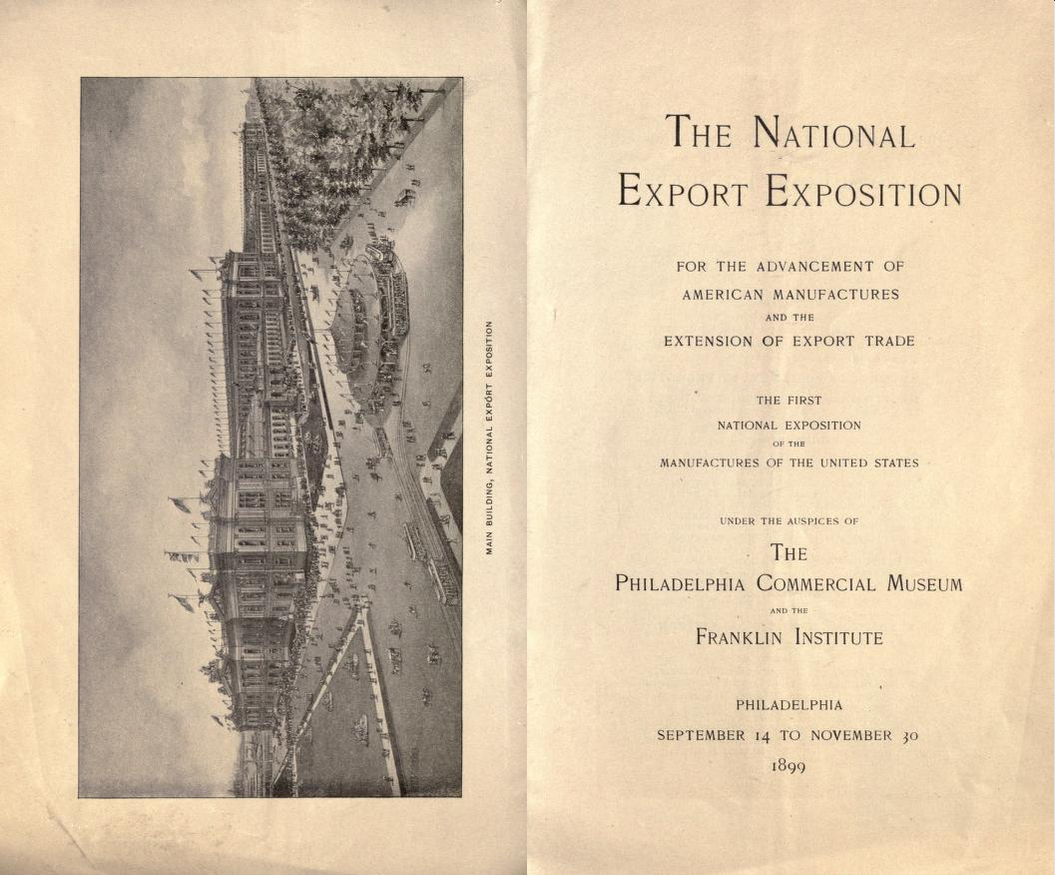The challenge in framing this beautiful 45″ x 20″ antique poster advertising the 1899 National Export Exposition in Philadelphia was to harmonize utilitarian and artistic concerns: to balance the simplicity and boldness of presentation naturally suitable to a poster frame, with the poster’s abundance of decorative detail. I’m pleased with the results.
The frame is made in quartersawn white oak with Weathered Oak stain, and its effectiveness relies first and foremost on the beautiful “ray flake” figure of the wood. The profile is basically flat, but the corners are decoratively treated using chamfers to emphasize and exaggerate and embellish the simple cut-in curve that articulates the corners.  My last post, on Framing Eva Pietzcker, showed what can be done with what I’m calling altered miters. Like Ms Pietzcker’s woodblock prints, this poster is elongated, and so likewise called for the frame to be in keeping with those proportions: its 3″ wide short sides (the top and bottom members) are 1/2″ wider than the vertical long sides, with the miters accordingly altered from the conventional 45 degrees. Again, the effect, meant simply to be consistent with the basic compositional character of the picture, should not draw attention, but be natural.
My last post, on Framing Eva Pietzcker, showed what can be done with what I’m calling altered miters. Like Ms Pietzcker’s woodblock prints, this poster is elongated, and so likewise called for the frame to be in keeping with those proportions: its 3″ wide short sides (the top and bottom members) are 1/2″ wider than the vertical long sides, with the miters accordingly altered from the conventional 45 degrees. Again, the effect, meant simply to be consistent with the basic compositional character of the picture, should not draw attention, but be natural.
The design problem of the frame, harmonizing the utilitarian and artistic aspects of the poster, in fact goes to concerns expressed in a section from a promotional pamphlet for the Exposition regarding the relation of the decorative to the utilitarian in the architecture of the Exposition (as well, presumably, in the “American manufactures” promoted by the event). It reflects larger assumptions held more strongly at that time than today about the inherent harmony between use and beauty, between the practical and the aspirational:
Art In the Exposition Buildings
While the Exposition has in view a most practical purpose, there was not, in the planning of the buildings, any idea of subordinating the beautiful and the artistic to the practical end. On the contrary, the ornamentation and decoration of the structures, though of the temporary character which must of necessity be used in Exposition buildings, will delight the eye and appeal to the innate love of art and beauty which every person possesses.
Out of a composition, the basis of which is plaster and paper-mache, more durable than the “staff” which made the buildings of the World’s Columbian Exposition a delight to look upon, have been formed columns with capitals as beautiful as though carved in white marble. Cornices and friezes, panels and screens, the design of skilled sculptors, aid in giving the buildings rare architectural attraction.
Above the main entrance a large pediment contains a group of thirteen figures, representing Commerce. Other pediments typify the four continents. Numerous groups of graceful figures, symbolical of Transportation, Navigation, Labor, Electricity, etc., rest on pedestals beside the pediments, and over the main entrance there is a large quadriga—a chariot drawn by four horses, carrying the beautiful figure of Progress, whose proudly poised head looks with calm and confident eyes into the future.
The title spread of the pamphlet is shown below. (The pamphlet is available at archive.org, here.)
« Back to Blog